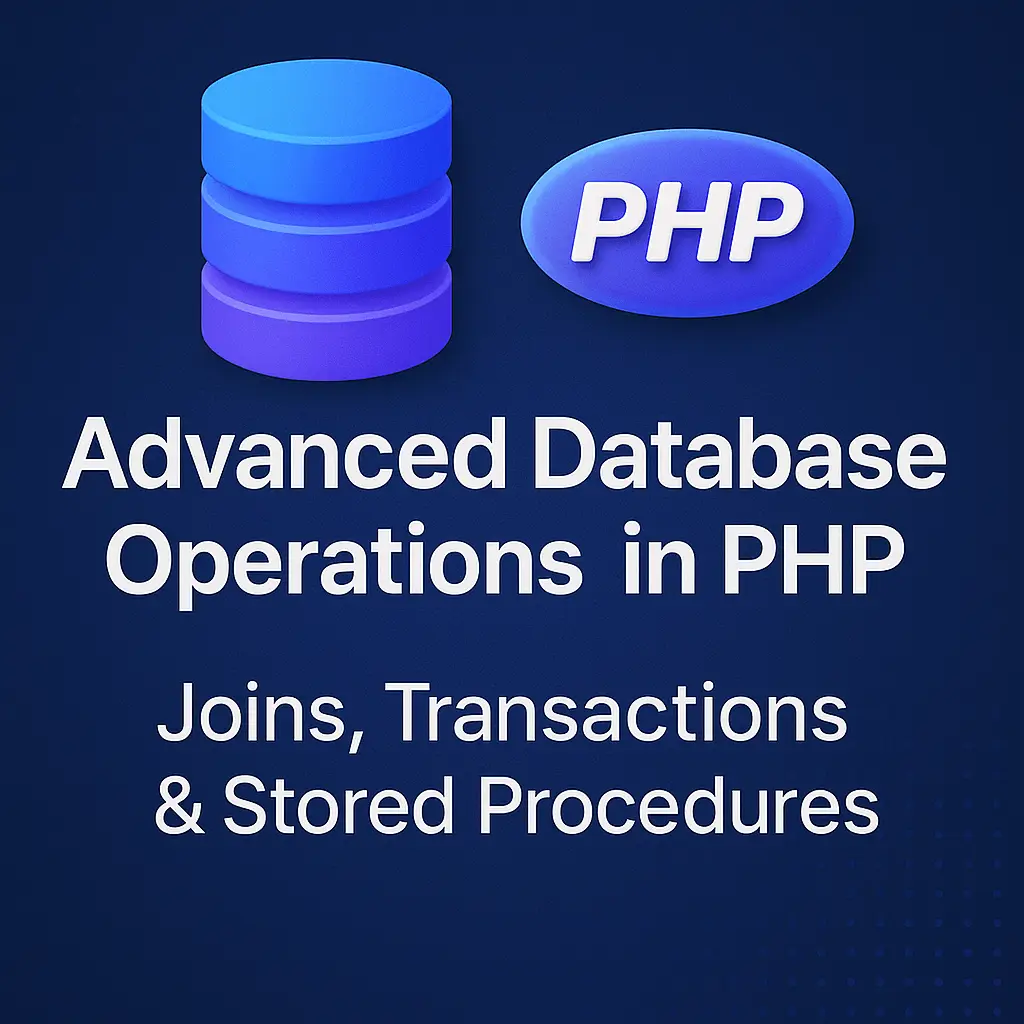By understanding these concepts and leveraging them effectively in PHP applications, developers can ensure data integrity, improve performance, and deliver a seamless user experience.
Understanding Transactions
What are Transactions?
In the context of databases, a transaction is a logical unit of work that consists of one or more database operations, such as inserts, updates, or deletes. Transactions ensure data integrity by guaranteeing that either all operations within the transaction are successfully completed (committed) or none of them are applied (rolled back). This atomicity property ensures that the database remains in a consistent state even in the event of failures or errors.
Implementing Transactions in PHP
PHP provides built-in functions for working with transactions in database operations. Let’s see how you can implement transactions using PDO (PHP Data Objects) with MySQL:
<?php
try {
$pdo = new PDO('mysql:host=localhost;dbname=my_database', 'username', 'password');
$pdo->beginTransaction();
// Perform database operations within the transaction
$pdo->exec("INSERT INTO table1 (column1) VALUES ('value1')");
$pdo->exec("UPDATE table2 SET column2 = 'new_value' WHERE condition");
// Commit the transaction if all operations are successful
$pdo->commit();
} catch (PDOException $e) {
// Rollback the transaction in case of errors
$pdo->rollBack();
echo "Transaction failed: " . $e->getMessage();
}
?>
Database Optimization Techniques
Indexing
Indexing is a fundamental optimization technique for improving database query performance. Indexes are data structures that allow the database engine to quickly locate rows in a table based on the values of certain columns. By creating indexes on columns frequently used in WHERE clauses or JOIN conditions, you can significantly reduce query execution time.
CREATE INDEX index_name ON table_name (column_name);
Query Optimization
Optimizing database queries involves analyzing and refining SQL queries to ensure they are executed efficiently. Techniques such as using proper WHERE clauses, minimizing the use of SELECT *, and avoiding unnecessary joins or subqueries can improve query performance dramatically.
SELECT column1, column2 FROM table_name WHERE condition;
Caching
Caching frequently accessed data in memory can reduce the need for repetitive database queries, leading to faster response times and improved scalability. Techniques like using Memcached or Redis for caching query results or utilizing application-level caching mechanisms can enhance overall performance.
Best Practices for Database Operations
Normalize Your Database: Design your database schema to minimize redundancy and ensure data integrity through normalization.
Monitor and Analyze Performance: Regularly monitor database performance metrics and analyze query execution plans to identify bottlenecks and optimize queries accordingly.
Use Prepared Statements: Protect against SQL injection attacks and improve performance by using prepared statements or parameterized queries in PHP.
Limit the Use of ORM: While Object-Relational Mapping (ORM) frameworks like Doctrine can simplify database interactions, excessive abstraction can lead to performance overhead. Use ORM judiciously and consider raw SQL for performance-critical operations.
Conclusion
Mastering advanced database operations in PHP is essential for building efficient, scalable, and high-performance applications. By understanding transactions and optimization techniques, developers can ensure data integrity, improve query performance, and deliver a seamless user experience. Whether it’s implementing transactions to maintain data consistency or optimizing database queries to minimize response times, embracing these advanced concepts empowers developers to unlock the full potential of their PHP applications. So, dive into the world of advanced database operations, apply optimization techniques judiciously, and build applications that scale effortlessly to meet the demands of users. Happy coding!






